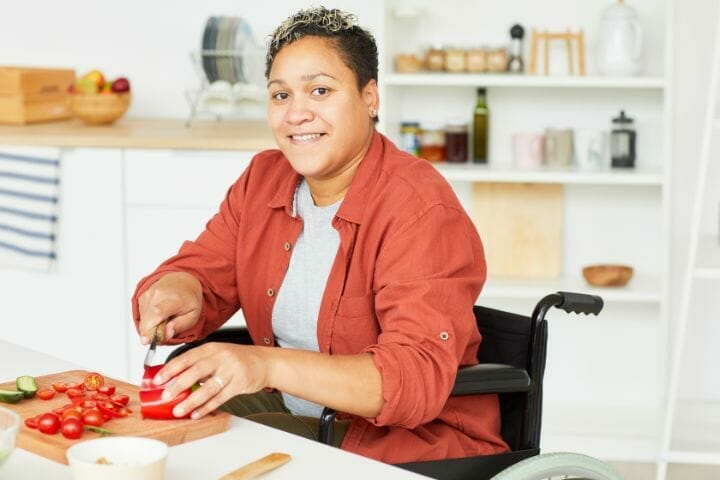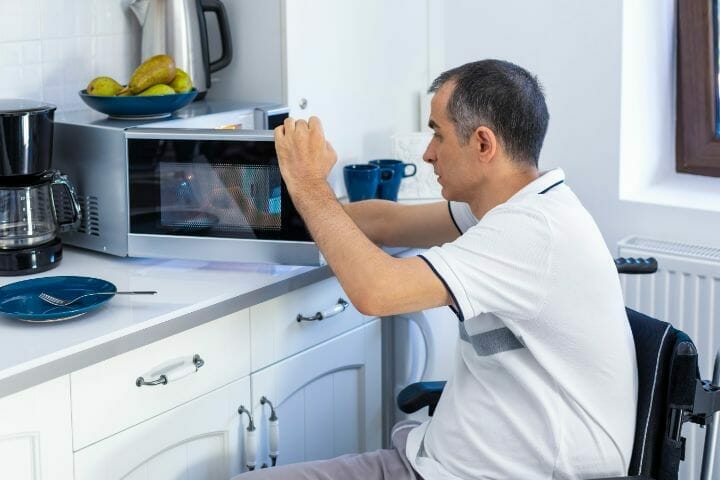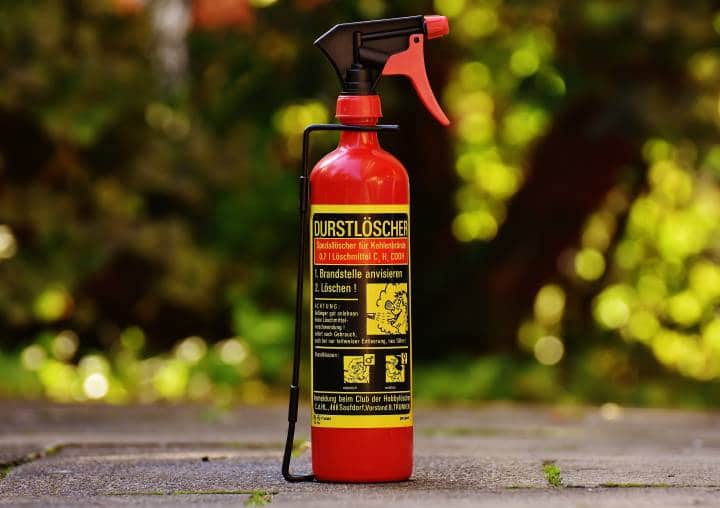According to a recent report by the United States Census Bureau, 8.5% of the world’s population is aged 65 and above, and with increasing life expectancy, better healthcare, and decelerating population growth, the percentage of seniors is expected to grow to 17% of the world’s population by 2050.
Contents
According to AARP, 87% of the elderly want to live in their homes while aging and over 70% of the people who are currently aged between 50 and 65 also feel the same way, which means that aging in place will continue to be the norm for times to come.
What this implies is that we need to start making our homes smarter, better prepared and more attuned to the needs of the elderly, so that they can live an independent life and feel comfortable in their surroundings while at the same time making sure that we have all the right equipment in place to avoid accidents and mishaps.
Below are a few reasons why the kitchen is one of the most dangerous places in the house:
- According to Disease Controls and Prevention (CDC), Foodborne disease causes 76 million people to get ill in the US.
- More than 150,000 kitchen fires are caused by faulty cooking equipment every year
- 42% of hand injuries are caused by lacerations in the kitchen.
- 45% of home fatalities between 2002 to 2005 were caused by unattended cooking utensils.
- After 65, falling is the leading cause of home deaths. The kitchen is the scene for many of those fall injuries.
We need to make sure that our kitchens are safe and sounds, as well as elderly-friendly. Below are a few suggestions on how we can do this.
Improved Lighting
3 million seniors every year have to visit the ER because of falls. Poor lighting is a major cause of falls. Below are some simple tips to improve lighting in your home:
- Replace regular switches with rocker switches
- Regularly check and replace lightbulbs with LED lights
- Install wireless motion-sensing lights
- Put in place automatic night lights which can be plugged in directly into wall plugs
- Install task lighting and under cabinet lighting for extra visibility and easy access
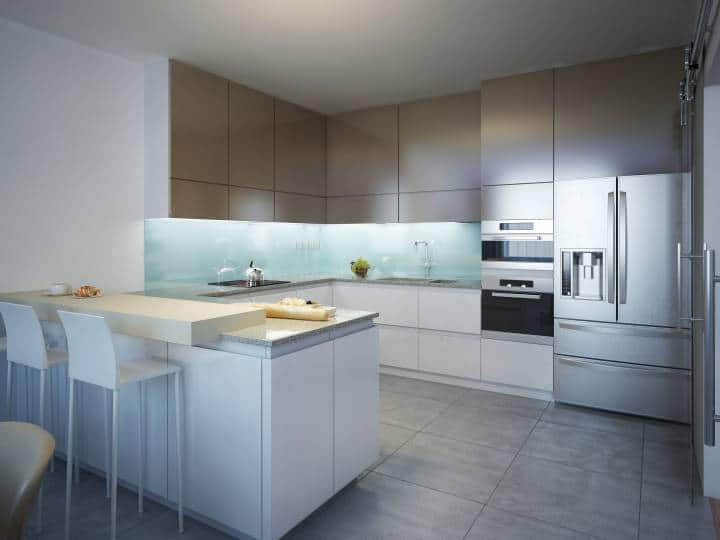
Accessible Storage
Bending down and stretching up are both dangerous for the elderly. Storage should be designed to make sure that both these activities are avoided.
- Ensure that all daily use items should be placed between waist and shoulder height, or in case a wheelchair is in use, accordingly keep them accessibly at wheelchair height.
- Prefer using pull out shelves which are much easier to use by those with poor dexterity, to replace all your lower shelves
- Similarly, replace all upper shelves with pull-down shelves.
- Use D-shaped handles instead of knobs. Knobs are hard to open if you have limited strength in your hands.
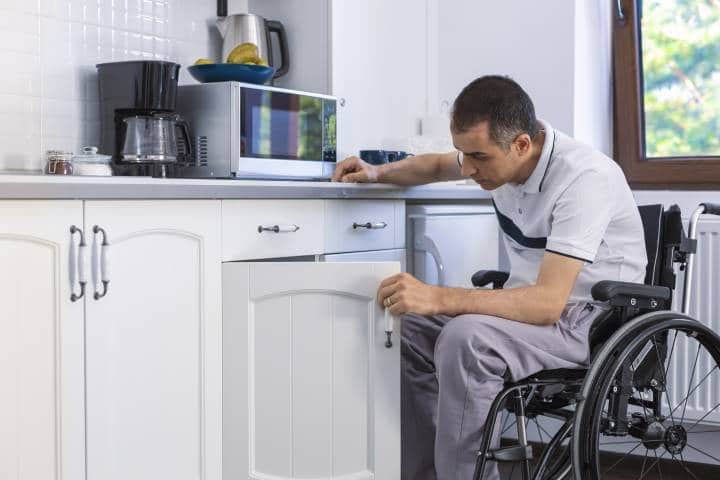
Kitchen Faucet & Sink
- Consider installing lever-style fixtures instead of twist knobs. As discussed above, twist knobs are difficult to operate for arthritic hands
- Another option is to go with motion sensor faucets, which are a bit more expensive but eliminates the possibility of leaving the faucet open accidentally.
- Make sure that the sink is not much deeper than 6 inches, to avoid having a senior bend over them. An ADA-compliant kitchen sink will be a great idea!
- Install an anti-scald valve to prevent accidental scalding.
- Have a handy soap dispensary to clean larger dishes that do not go into the dishwasher.
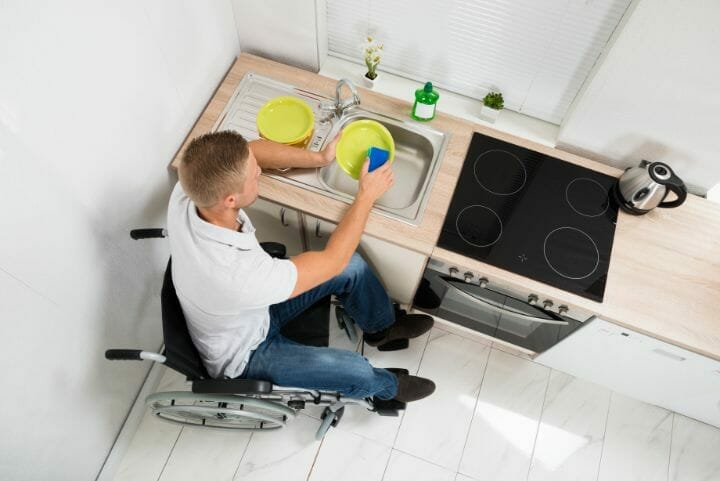
Countertops
- Add multilevel countertops for the elderly and the disabled who might want to sit while cooking their meal, or who are using a wheelchair
- Use surfaces that are easy to use and maintain, instead of granite.
- Avoid clutter at all times, keep all unnecessary items inside closets and cabinets.
- Install grab bars near the edges of the countertop for accessibility and to prevent falling.
- Color-code the edges of the countertop, and try to use rounded edges.
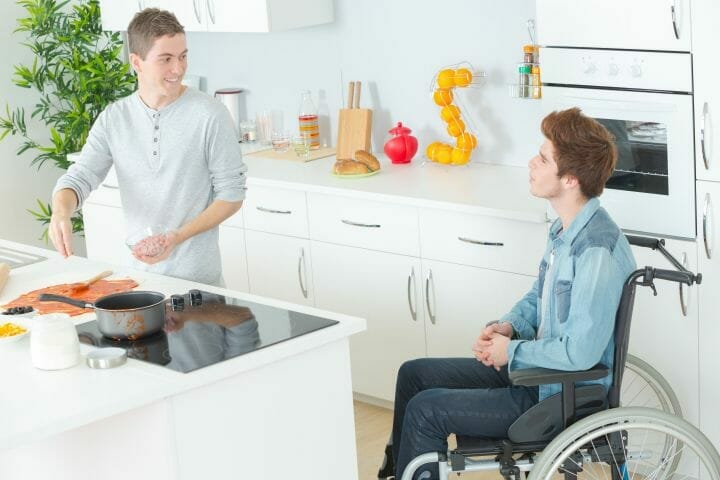
Oven, Sink and Refrigerator
- The three main items of a kitchen, the oven, kitchen sink and the refrigerator should be as close as possible to each other, to avoid unnecessary movement.
- Install wall ovens, aligned with the countertops to avoid having to bend over.
- Prefer cooktops instead of a normal range. Cooktops cool much faster and can be installed at various heights, plus they are much easier to use when trying to move your food from the cooktop to the countertop.
- Use self-cleaning cooktops with front-mounted controls and easy to read, large displays.
- Choose an ADA compliant fridge with a long door handle to be able to grip it easily
- Prefer refrigerators with side-by-side freezer units, so that one does not reach up to access it.
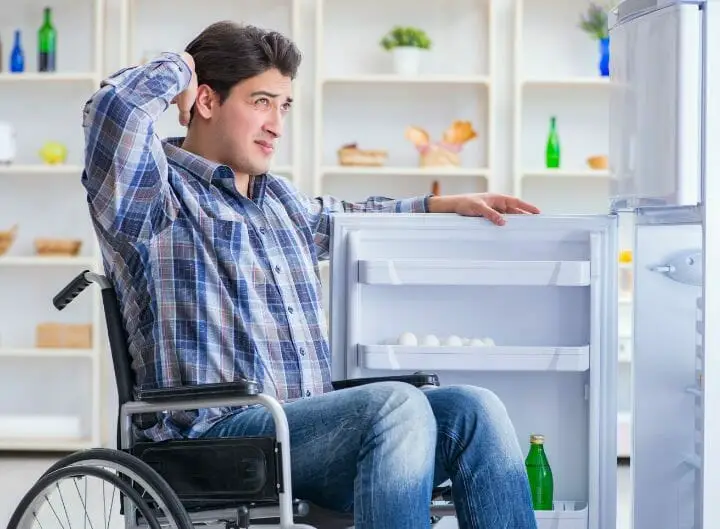
Wheelchair Accessible Kitchen Island
The elderly and the disabled who use wheelchairs need their table surface to be between 28 and 34 inches from the ground. So if you have both able bodied and disabled with wheelchairs living in the same house, you can consider getting a wheelchair accessible kitchen island with dual heights.
Microwave Oven
- Always install microwaves at eye level.
- See if you can get an ADA compliant microwave that is adaptive to people who may be hard of sight and hearing
- Always choose one which has a large display, with clear, bold and big letters to read.
Dishwasher
- Most dishwashers are installed at waist height. Avoid such installations. Instead, make sure that yours is installed at an accessible height.
- Considering getting an ADA compliant Dishwasher.
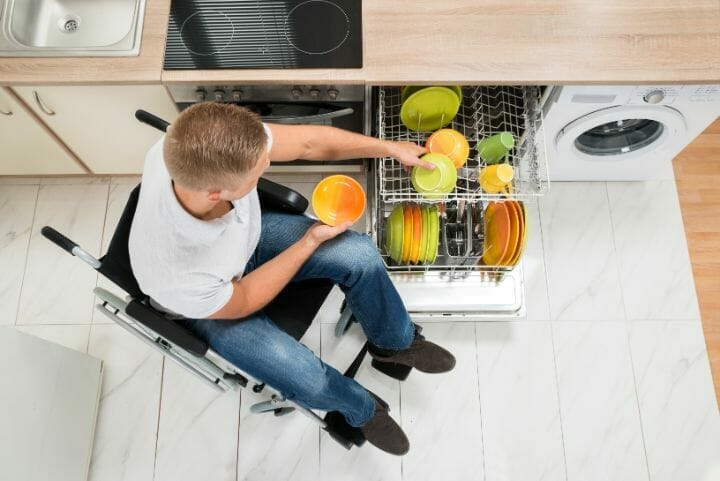
Other Kitchen Appliances (Toaster/Kettle/Coffee makers etc)
- Always buy appliances (toasters, kettles, coffee makers etc) that have clear, large displays with easy to read letters
- Any appliance that is used for heating things needs to have an insulated surface all over
- Keep an eye out for devices that have a temperature measurement, which tells how hot the inside of the appliances is.
- Kettles should have non-spill spouts so that there is no accidental scalding
- Many appliances now come with auto-cutoff features which make sure they cannot get too hot and in case someone forgets to turn them off
Dishware
- Consider using hard plastic dishware, instead of china or stainless steel silverware.
- If you do keep silverware, make sure that the knives are sharp. Most kitchen injuries occur due to dull knives, not sharp ones.
Safety Devices
- Medical Alert Device: Keep an easily accessible medical alert device handy so that your loved one can notify medical personnel quickly in case of an accident
- Smoke and Monoxide Detectors: The kitchen has the highest probability of being the origin of a fire. Therefore, prioritize your kitchen for maximum smoke and monoxide detectors.
- Fire Extinguisher: In the event of a fire, a fire extinguisher should be easily accessible at all times.
- Telephone lines: Place telephone lines and intercom devices within arm’s reach. Avoid phones with cords that someone might trip over.
The video below shows how to install a fire extinguisher.
Wall Outlets
- Wall outlets are the second biggest reason for fires (the first being the cooktop). Ensure that no wall outlet should have more than 2 devices plugged in at any time
- Do not place electrical outlets near the sink at any time
- Reorganize your countertop to ensure that all appliances are near to an outlet to avoid long unnecessary wires hanging around.
Flooring
- Make sure the flooring you put in is anti-spill. Spills are a major source of fall injuries
- Ensure that the flooring is anti-glare.
- Tiles and stones are difficult to stand on for long intervals and usually lead to lower back pain. Use very small tiles
- If you have rugs, please remove them. A throw rug in front of the sink is a usual culprit for trip and fall injury.
- Use threshold ramps wherever there is a need to move from one surface level to another. This makes your kitchen, wheelchair accessible. Since they are temporary wheelchair ramps, they are easy to install and replace, making the kitchen easily configurable.

Location of the Kitchen for the Disabled
- Always make your kitchen on the same floor of the house as where you intend to live. Cooking is a daily activity and it is best to avoid your loved ones having to run up and downstairs to do their daily cooking.
- Keep large open passageways and doorways in the kitchen, to ensure easy walkthrough.
Other Helpful Items
- Step stools are great for reaching the top of the cabinet shelves
- Special jar and can openers (both, automatic can openers and manual ones) for arthritic people ensure that they can open these items easily and without having to reach out to someone else
- Consider buying specialized adaptive utensils (such as curved cutlery) which make it easier for people with lower hand dexterity.
- Cutlery with padded handles can b of immense help to the elderly with shaky hands.

You may also like to read about:
Conclusion
The elderly population of the world is rising rapidly, though our homes continue to be designed for young people. We need to make sure that our homes are built on adaptive principles so that our loved ones can continue to live their lives there in their old age.
Among all the rooms, the kitchen can be one of the deadliest places in the house, especially for the elderly. It is important to ensure that we redesign our traditional kitchens.
Some basic rules are: Keep things uncluttered in the walkways, door\ways, and countertops, keep all necessary gadgets and devices be at an accessible height, avoid long wires, keep handles, knobs, and faucets elderly-friendly, keep pull out cabinets, ensure good lighting at all times, remove edges everywhere and keep contrasting colors all around.
While this article has covered a few basic points on making kitchens more adaptable, each individual has his/her own unique needs which can only be assessed by themselves.
Lastly, while your kitchen may seem adaptive today, always keep the future in mind. While your loved one’s eyesight might be perfect today, it might deteriorate in a few years. Cover all such possibilities while making modifications to your home and kitchen.

